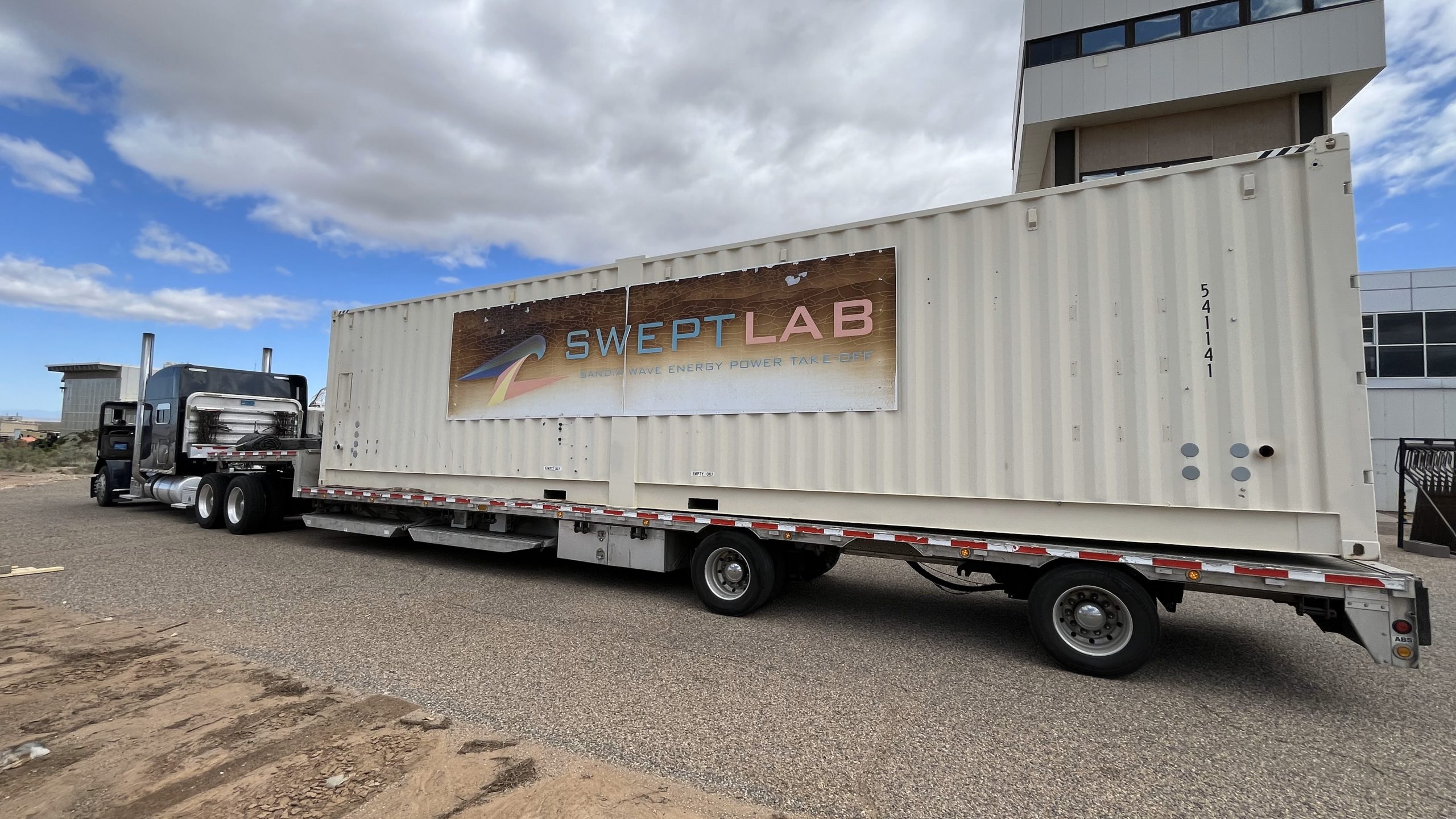

A group of engineers watch as a forklift moves a shipping container onto a flatbed truck. The container is about to embark on a four-day trip from Albuquerque, New Mexico, to Corvallis, Oregon. Inside the container is a one-of-a-kind mobile lab built to test marine energy devices. The Sandia Wave Energy Power Take-off (SWEPT) Lab, a dry bench test rig for wave energy converter (WEC) power take-off systems, was configured to test the Sandia WaveBot, resulting in a WaveBot in a box: a WaveBox. After careful preparation, the WaveBox made its inaugural journey to the 2024 WEC Modeling and Controls Workshop to show attendees what mathematical theory looks like in practice.
The workshop brought together experts from Pacific Marine Energy Center, the National Renewable Energy Laboratory, Evergreen Innovations and Sandia National Laboratories for a week-long course on wave resource assessments, numerical WEC-Sim modeling, experimental wave laboratory test campaigns, and WEC design/control theory. Thanks to the mobile nature of the SWEPT Lab and the WaveBox, attendees got more than theory.

Another novel benefit of the WEC Modeling and Controls Workshop, and the reason it was held in Corvallis, was that attendees were able to visit the Large Wave at Oregon State University’s Hinsdale Wave Research Laboratory. There, they saw the Laboratory Upgrade Point Absorber (LUPA) WEC in action. Together, the LUPA and the SWEPT Lab/WaveBox gave workshop participants a chance to see practical examples of WEC testing, modeling, and control.
All workshop costs, including travel, were covered by TEAMER, which is supported by the DOE’s Water Power Technologies Office. Attendees applied for the workshop and attended four webinars prior to the in-person event. The webinars introduced attendees to marine energy principles and theories so the workshop could cover more advanced topics. This immersive approach reinforced theoretical knowledge and offered attendees a deeper understanding of the practical applications of the concepts they had studied.
After the workshop, the SWEPT Lab in its WaveBox was loaded onto a flatbed truck for the journey back to New Mexico. This inaugural trip will not be its last. Future workshops are planned to allow Sandia researchers the opportunity to partner with academia and industry to showcase the potential of co-design. With continued support from the DOE’s Water Power Technologies Office, initiatives like the SWEPT Lab and the WEC Modeling and Controls Workshop are paving the way for a sustainable energy future, where the power of the ocean can be harnessed to meet the world’s growing energy needs.
September 12, 2024